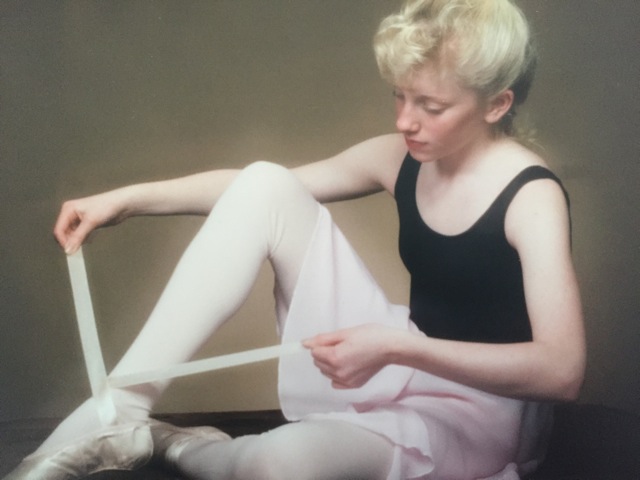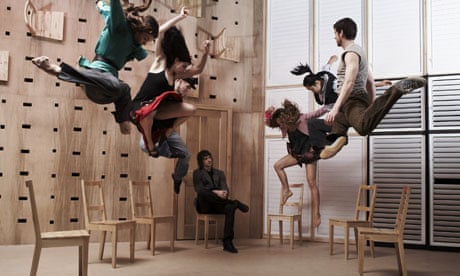#GirlGods Blog No.2 : Why I Dance (By Shannon Stewart)
I. t h e l i s t
I started dancing when I was three because I wanted to be like my sister.
I danced because I wanted to be able to do things with my body.
I danced because I wanted to be pretty and talented.
I danced because I wanted to be seen.
Then I danced because I didn’t know what else to do.
I danced because I loved music.
I danced because it got me through stuff.
I danced because I wanted to rigidly define and control my body’s image and its actions.
I danced because I wanted to be different.
I danced because I was lost and depressed.
I danced because I wanted to be in shape.
I danced because I wanted to be seen.

I stopped dancing.
I started to dance again because I wanted to try to subvert dance’s conventions and reverse its negative impacts on me and other people.
I danced because I didn’t know how to live without dancing.
I danced because I liked the people I was around.
I danced because I loved music.
I danced because I was trying to see myself.
I danced because I was trying to learn to be in and comfortable with my body.
I thought I would stop dancing.
I kept dancing because I needed therapy.
I danced because it altered my state.
I danced because there was so much I didn’t know.
I danced because of women who intimidated me.
I danced because I thought it took me outside of male dominated spaces.
I danced to prove that modern dance wasn’t all bad.
I danced because I wanted to know my body and learn from it.
I danced because I thought it was an act of transference and generosity.
I danced because I believed existence presided in my physical body.
I dance because I want to not always know what is happening.
I dance because I want to learn something outside of my rational mind
I dance because of the exchange between performers and audience, community and issues, self and other.
I dance because it repels binary.
I dance to be subversive.
I dance for the male gaze.
I dance because I want people to think I’m beautiful and talented.
I dance for media attention.
I dance because my parents thought women needed to be educated and have an after dinner parlor talent.
I dance because my family could afford to send me to lessons, buy my leotards, shoes, and support me when my finances fell apart.
I dance because I feel like I have to prove something.
I dance because I want to do something right, well, good, helpful, meaningful, challenging, virtuous, controversial, transgressive, elegant, inexplicable.
I dance because it means I’m in spaces where I feel like I belong.
I dance in spite of feeling like I will never stand out.
I dance because it brings me face to face with sexism, internalized misogyny and white privilege.
I dance because there are far out mind-body epiphanies that can unravel dominant paradigms.
I dance because there is possibility.
I still dance because I love music.
II. t h e d r e a m
Pat Graney and I are going to collaborate on a piece where a large cast of women and trans men dress like principle ballerinos (male dancers in black tights, white t-shirts and white ballet shoes) and do minimal “back-up” dancing while other women move large appliances on and off the stage.
Men in Dance will produce and present it.
III. c o n d i t i o n s i n / u n d e r w h i c h w o r k i s m a d e

Look before you leap: The Jasmin Vardimon Company rehearse for Justitia at Sadler's Wells. Photograph: Ben Harries Ben Harries/PR
I hope by now that any experienced dance goer and maker has heard the statistics about the disproportionate number of male choreographers and dancers who get opportunities and recognition in a field where they are far outnumbered (but if not, here you go: http://www.theguardian.com/stage/2013/apr/28/women-choreographers-glass-...). [And I hope too that there is a general understanding that there is no such thing as reverse sexism, just as there is no such thing as reverse racism or reverse sexual orientation discrimination.] And I understand that to write of said statistics will be largely received as a feminist rant instead of a presentation of information. . . so why bother?
In this opportunity to provide an informed, even scholarly feminist critique to launch the work of a fearless choreographer whose work is artistically genius because of the embedded politics and politically genius because of its artistry, the realist in me still presides. Neither statistics, rants, or intellectualisms provide the magic bullet to deconstruct our unconscious and conditioned biases. . . not in the battle of gender equality or the other fights of our time – environmental destruction, mass incarceration, and unending war. So I lose my steam just as I’m catching momentum.
General dance audiences delight in seeing young talented bodies, particularly men’s, perform feats of athleticism in aesthetic designs that present themselves as appealing according to some universal standard of quality that are in fact white (perceived as non-ethnographically specific), western (of the “developed” world), and patriarchal (reinforcing women as objects, things to be manipulated, used and exchanged).
It isn’t conscious or sought out purposefully (though sometimes it certainly is), it’s embodied. In both performer and viewer. Intellectually understood sexism may be, aggressively attempted to be dislodged it might be, experienced quite differently depending upon an individual’s relation to the power dynamics of race and class and sexual orientation, but deeply learned and bodily embedded.
To age as a woman in dance is to continually experience a kind of stunted maturity, a body needed to be restrained and put into the forms that are recognized and appreciated. To be a woman aging in a dance audience, is to see the reification of youth as supreme, to stop being able to relate to the content, form and material of what is presented as contemporary dance. To see the dispensable nature of women’s bodies.
iv. m a t e r i a l
Because of the dual consciousness, this embodied clusterfuck of social conditioning, education, training, right now as a dance artist, as a white woman, as an educated and middle class American, I see my body as material. In my physical practice I have an unwavering push to find some sort of an edge, a desire to mine out every bit of physical information stored – pirouettes, foites, cartwheels, baby freezes, six steps, texas two step, salsa, downward dog, birds of paradise, bartinieffs, forsythe improvisation, body mind centering, authentic movement, contact improv, long distance running, hiking, biking, snowboarding, skateboarding, nonprofit leadership performance tools, bodily shapes of being an employee, a student, a date, ballet, yoga, ballet, yoga and more fucking ballet.
[I don’t want to be pretty. I don’t want to make dance phrases. I don’t want you to know what this is. I don’t want you to know its gender or its sexuality. I don’t want you to buy or sell it].
What is this body saying?
(What is this body of the audience saying?)
In that space, there is possibility for dance. . . and . . .
© #GirlGods Blog 2015, Essay by Shannon Stewart

